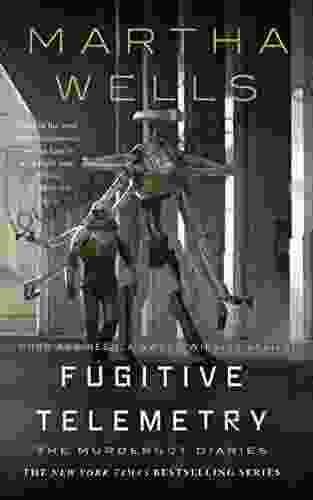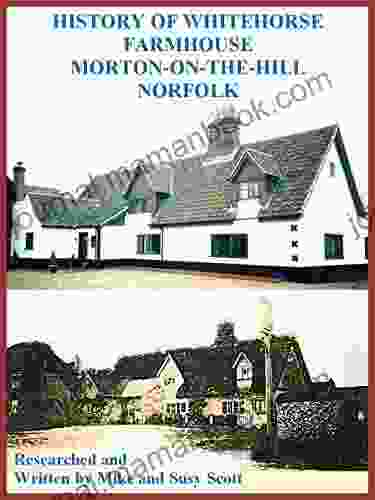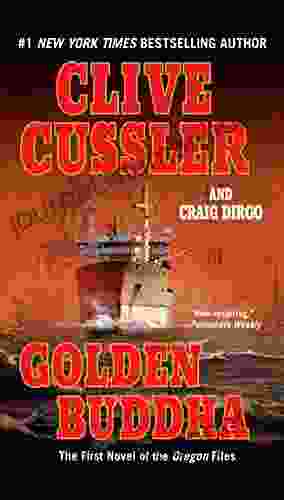A Comprehensive Historical Exploration of Whitehorse Farmhouse: A Timeless Treasure in Morton on the Hill, Norfolk

Nestled amidst the serene landscapes of Morton on the Hill, Norfolk, lies Whitehorse Farmhouse, an exquisite Grade II listed building that has witnessed centuries of captivating history. Its journey through time has left an indelible mark on the fabric of the house, revealing the stories of its former occupants and the transformations it has undergone.
5 out of 5
| Language | : | English |
| File size | : | 4754 KB |
| Text-to-Speech | : | Enabled |
| Screen Reader | : | Supported |
| Enhanced typesetting | : | Enabled |
| Word Wise | : | Enabled |
| Print length | : | 18 pages |
| Lending | : | Enabled |
Origins and Early History
The origins of Whitehorse Farmhouse can be traced back to the medieval period, when it was a humble farmhouse known as "le Whitehors." The earliest written record of the property dates back to 1320, but it is believed to have existed long before that. During this time, the farmhouse served as the heart of a thriving agricultural community, providing shelter and sustenance to its occupants.
Architectural Evolution
Over the centuries, Whitehorse Farmhouse has undergone significant architectural changes, reflecting the prevailing styles and tastes of each era. In the 16th century, the house was extended, resulting in the addition of a cross-wing and a substantial brick fireplace. This renovation marked the transition of the farmhouse from a modest dwelling to a more comfortable and spacious residence.
The 18th century brought further embellishments, including the construction of a two-storey porch and the installation of sash windows. These alterations gave the house a more elegant and symmetrical appearance, aligning with the Georgian architectural style.
The Victorian Era: A Period of Refinement
During the Victorian era, Whitehorse Farmhouse experienced a significant transformation. In 1851, the property was purchased by the wealthy Colman family, who embarked on a major renovation campaign. The house was extended to the rear, adding a new wing and a grand staircase. The interior was lavishly decorated with ornate plasterwork, marble fireplaces, and stained glass windows.
The Colman family's influence is evident throughout the house, from the intricate detailing of the woodwork to the opulent furnishings. Their extensive renovations transformed Whitehorse Farmhouse into a luxurious and sophisticated residence, reflecting the Victorian passion for grandeur and comfort.
The Edwardian Era: A New Chapter
After the Colman family's departure, Whitehorse Farmhouse entered a new chapter in its history. In 1901, it was acquired by Sir Thomas Fowell Buxton, a prominent politician and social reformer. Buxton made further alterations to the house, including the addition of a conservatory and the installation of electric lighting.
Under Buxton's ownership, Whitehorse Farmhouse became a gathering place for influential figures in politics and society. The house witnessed lively debates, intellectual discussions, and grand social events. Its walls echoed with the voices of prominent thinkers, shaping the course of history.
The 20th Century: Modernization and Preservation
The 20th century brought both modernization and a renewed appreciation for Whitehorse Farmhouse's historical significance. In the 1950s, the house underwent extensive restoration work, preserving its architectural integrity while introducing modern amenities such as central heating and plumbing.
In 1983, Whitehorse Farmhouse was designated as a Grade II listed building, recognizing its architectural and historical importance. This designation has ensured the preservation of its unique character and protected it from alterations that could compromise its heritage.
Occupants and Their Stories
Throughout its long history, Whitehorse Farmhouse has been home to a diverse array of occupants, each leaving their mark on the house and its surroundings. From medieval farmers to Victorian industrialists and Edwardian reformers, the house has witnessed the lives of countless individuals.
One of the most notable occupants of Whitehorse Farmhouse was Robert Colman, a wealthy mustard manufacturer and philanthropist. Under his ownership, the house became a hub for social and intellectual gatherings, attracting prominent figures such as Charles Dickens and William Gladstone. Colman's legacy continues to be felt in the house, with his portrait adorning one of the walls.
Another fascinating occupant was Sir Thomas Fowell Buxton, who dedicated his life to the abolition of slavery. During his time at Whitehorse Farmhouse, he led the campaign that ultimately resulted in the abolition of slavery throughout the British Empire. The house's connection to such a significant historical figure adds another layer to its captivating story.
Farming and the Land
Whitehorse Farmhouse has always been closely connected to the surrounding land. Throughout its history, the house has served as the center of a thriving agricultural enterprise. The fertile soils of Norfolk have sustained generations of farmers, who have cultivated crops and raised livestock on the estate.
The land associated with Whitehorse Farmhouse has witnessed both agricultural innovations and the changing face of rural life. From medieval farming practices to the mechanization of agriculture, the estate has played a vital role in the economic and social fabric of Morton on the Hill.
Whitehorse Farmhouse stands as a testament to the enduring power of history. Its journey through time has left an indelible mark on its architecture, its occupants, and the surrounding land. From its humble beginnings as a medieval farmhouse to its transformation into a magnificent Victorian and Edwardian residence, the house has witnessed centuries of change and progress.
Today, Whitehorse Farmhouse remains a treasured landmark in the heart of Norfolk. Its Grade II listed status ensures the preservation of its architectural heritage for generations to come. As visitors explore its grand rooms and admire its intricate details, they are transported back into a bygone era, experiencing the vibrant history that continues to resonate within its walls.
Whitehorse Farmhouse is a living testament to the interconnectedness of the past, present, and future. Its story reminds us of the importance of preserving our architectural heritage, honoring the lives of those who have come before us, and continuing the legacy of a timeless treasure.
5 out of 5
| Language | : | English |
| File size | : | 4754 KB |
| Text-to-Speech | : | Enabled |
| Screen Reader | : | Supported |
| Enhanced typesetting | : | Enabled |
| Word Wise | : | Enabled |
| Print length | : | 18 pages |
| Lending | : | Enabled |
Do you want to contribute by writing guest posts on this blog?
Please contact us and send us a resume of previous articles that you have written.
 Top Book
Top Book Novel
Novel Fiction
Fiction Nonfiction
Nonfiction Literature
Literature Paperback
Paperback Hardcover
Hardcover E-book
E-book Audiobook
Audiobook Bestseller
Bestseller Classic
Classic Mystery
Mystery Thriller
Thriller Romance
Romance Fantasy
Fantasy Science Fiction
Science Fiction Biography
Biography Memoir
Memoir Autobiography
Autobiography Poetry
Poetry Drama
Drama Historical Fiction
Historical Fiction Self-help
Self-help Young Adult
Young Adult Childrens Books
Childrens Books Graphic Novel
Graphic Novel Anthology
Anthology Series
Series Encyclopedia
Encyclopedia Reference
Reference Guidebook
Guidebook Textbook
Textbook Workbook
Workbook Journal
Journal Diary
Diary Manuscript
Manuscript Folio
Folio Pulp Fiction
Pulp Fiction Short Stories
Short Stories Fairy Tales
Fairy Tales Fables
Fables Mythology
Mythology Philosophy
Philosophy Religion
Religion Spirituality
Spirituality Essays
Essays Critique
Critique Commentary
Commentary Glossary
Glossary Bibliography
Bibliography Index
Index Table of Contents
Table of Contents Preface
Preface Introduction
Introduction Foreword
Foreword Afterword
Afterword Appendices
Appendices Annotations
Annotations Footnotes
Footnotes Epilogue
Epilogue Prologue
Prologue L Elizabeth Forry
L Elizabeth Forry Benjamin Shapiro
Benjamin Shapiro Ronnie Burkett
Ronnie Burkett Alex Beyman
Alex Beyman Alessandro Manzoni
Alessandro Manzoni Ayman Hassan
Ayman Hassan Katy Bowman
Katy Bowman William M Wiecek
William M Wiecek Mr Healthy Foodie
Mr Healthy Foodie Matthew S Cox
Matthew S Cox Lord Redesdale
Lord Redesdale Josie Ford
Josie Ford Heather Mchugh
Heather Mchugh Ralph Jackman
Ralph Jackman Richard Turbet
Richard Turbet Einat Admony
Einat Admony Karen Miller
Karen Miller C F Earl
C F Earl Janet L Jones
Janet L Jones Alex Davis
Alex Davis
Light bulbAdvertise smarter! Our strategic ad space ensures maximum exposure. Reserve your spot today!
 Hudson HayesFollow ·9.3k
Hudson HayesFollow ·9.3k Juan RulfoFollow ·8.7k
Juan RulfoFollow ·8.7k Ethan MitchellFollow ·19.7k
Ethan MitchellFollow ·19.7k Corbin PowellFollow ·11.6k
Corbin PowellFollow ·11.6k Donald WardFollow ·15.7k
Donald WardFollow ·15.7k Keith CoxFollow ·12.4k
Keith CoxFollow ·12.4k Chadwick PowellFollow ·5.4k
Chadwick PowellFollow ·5.4k Pablo NerudaFollow ·4.3k
Pablo NerudaFollow ·4.3k

 Alexandre Dumas
Alexandre DumasFugitive Telemetry: Unraveling the Secrets of the...
In the realm of...

 Caleb Carter
Caleb CarterBlack Clover Vol 25: Humans and Evil - A Journey into the...
Unveiling the Sinister Forces Black...

 Israel Bell
Israel BellHow to Make Offers So Good People Feel Stupid Saying No
In today's competitive business environment,...

 Simon Mitchell
Simon MitchellWrath of Hades: The Children of Atlantis
An Epic Tale of...

 Percy Bysshe Shelley
Percy Bysshe ShelleyStrengthen Your Immune System: Fight Off Infections,...
What is the...

 Clark Bell
Clark Bell10 Things I Wish Someone Had Told Me Earlier
As we navigate through life, we accumulate a...
5 out of 5
| Language | : | English |
| File size | : | 4754 KB |
| Text-to-Speech | : | Enabled |
| Screen Reader | : | Supported |
| Enhanced typesetting | : | Enabled |
| Word Wise | : | Enabled |
| Print length | : | 18 pages |
| Lending | : | Enabled |












